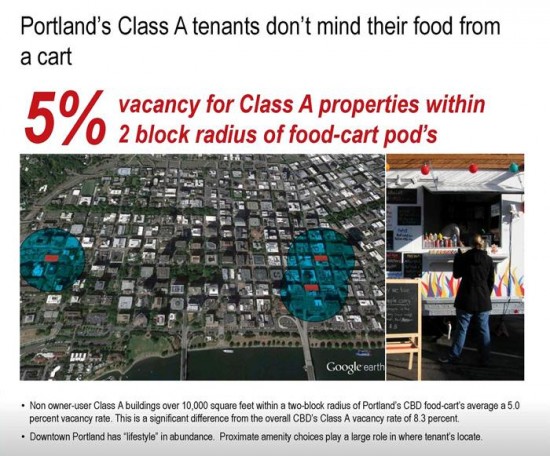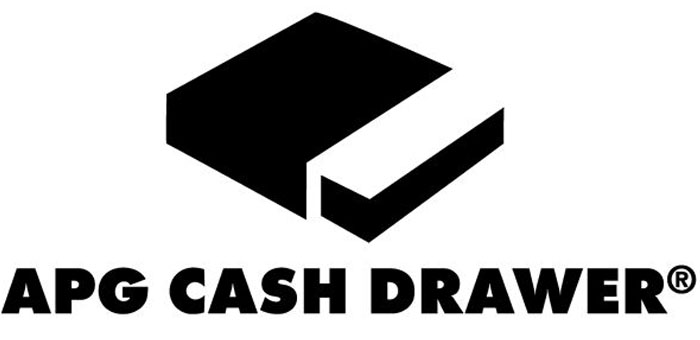PORTLAND, OR – Being near a food cart pod is very, very good for downtown office buildings and their owners.
Jones Lang LaSalle startled us last week with a report that Class A buildings are significantly more occupied if they are within two blocks of one of Portland’s four primary downtown food pods.
The vacancy rate for food cart-adjacent office buildings is just 5 percent, significantly lower than the market average of 8.3 percent.
This isn’t a complete surprise. As I’ve visited with businesses signing leases for “creative space,” food carts are a constant theme.
Chris Cook, COO for New Relic, said as much when the San Francisco-based software company decided to lease two floors at U.S. Bancorp Tower, 111 S.W. Fifth Ave. “Big Pink” had a landlord eager to accommodate its need for an open design space for its growing Portland engineering operations and proximity to food carts.
“Everyone leaves and gets a food truck lunch,” he told me a week ago, by way of explaining the company’s collaborative culture. “We eat lunch together every day, every body”
We asked Patricia Raicht, vice president for research at Jones Lang LaSalle, to dig deeper into the leasing numbers associated with food carts. Bon appétit!
Food carts are dishin’ up good news for landlords. After hearing how food cart pods weighed in on several companies’ evaluation criteria for a new home, we at Jones Lang LaSalle decided to do a more in-depth analysis of what the office market dynamic is for those areas.
According to goodcartsportland.com, Portland has over 475 food carts and many of them are organized into what are known as “pods.” While many food carts call downtown Portland home, there are four major food cart pods in the central business district, three located on the north end between Southwest Alder and Stark and one at the south end of downtown near Portland State University.
We analyzed the office market within a two-block radius around these pods two ways.
First we looked at Class A space and found that there is just over 3.5 million square feet of competitive office space across 10 buildings. This building set’s combined vacancy rate, leasing activity, and rental rates have significantly outperformed the rest of the Class A market.
Portland’s Downtown Class A vacancy rate is very tight at 8.3 percent, yet these buildings’ vacancy levels sit more than 300 basis points below that overall figure, with a 5 percent vacancy rate. During 2012 these buildings have experienced more than 150,000 square feet of leasing activity, and a rental rate spread of over $2.00 per square foot exists for these buildings with an average asking rate of $28.57 per square foot, or $2.08 more than the Class A average of $26.49 per square foot.
Second, we expanded the analysis to include both Class A and B buildings in the same geographic area.
Find the entire article by Patricia K. Raicht and Matt McClenaghan at the Portland Business Journal <here>




